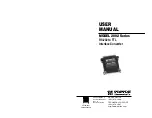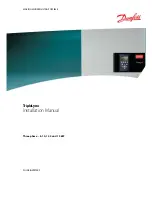
Page 4
2
Getting Started
Hilo was designed to be a product that is so easy to use that this section of the manual would scarcely be necessary. However, it is
quicker to learn how the device works in one go, then to spend precious minutes figuring things out by randomly pressing buttons. We
recommend reading this section thoroughly, before putting Hilo to serious use, if you can manage it.
2.1
Unpacking
Before setting up Hilo for use, remove it from the box and verify that the box contents described in section 1.3 are all
present.
If so, connect the Hilo AC power cord to a grounded AC Outlet, or power distribution
unit. Switch on the power switch on the back of Hilo (note: the | position on the power
button is “On”)
Next press the front panel standby switch and verify that Hilo powers up.
If it does not, verify that the selected AC power source is operational. If it is and the unit
still will not power up, please contact Lynx technical support.
If Hilo DOES power up, move on to Set up…
2.2
Set up
Hilo was designed to be adaptable to a variety of operational environments: on a desktop for Audiophile enthusiasts, in
an equipment rack for recording studios, over a mixing console for a mastering engineer, etc. If Hilo is to be used on a
desktop or other flat surface, it is best to leave the pre-installed rubber feet in place. These are designed to prevent
scratching of Hilo or the surface that it is set upon.
In a recording studio context, where space is at a premium, one may choose to rack mount Hilo. A rack kit for the Hilo is
available from Lynx dealers, or from
www.lynxstudio.com
.









































